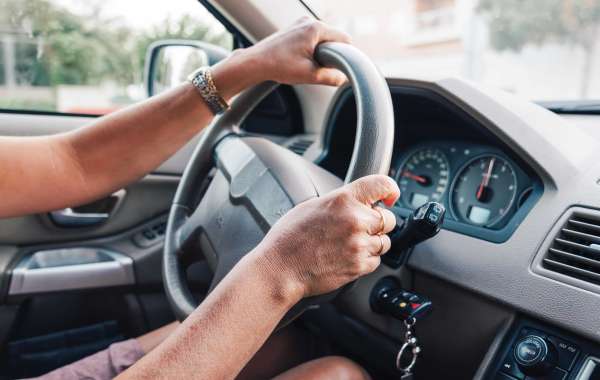Navigating the UK Licensing System: What You Need to Know
When it comes to driving in the United Kingdom, acquiring a license is a crucial step that enables people to legally run vehicles. The UK licensing system is structured, detailed, and developed to make sure that all drivers satisfy specific security and competency requirements. This article provides an extensive summary of the UK license, including its types, application process, requirements, and regularly asked concerns.
Understanding UK Driving Licenses
The UK driving license is a main document that certifies a person's ability to drive a vehicle on public roadways. The license symbolizes that the holder has passed the needed tests and fulfills the required health and wellness standards. There are numerous types of licenses, dealing with different type of cars and driving scenarios.
Kinds Of UK Driving Licenses
Provisional License: This is the preliminary step towards acquiring a full driving license. A provisionary license allows people to drive under particular constraints, normally requiring the supervision of an experienced driver.
Complete Car License: Once individuals pass the driving test, they are awarded a complete car license, allowing them to drive automobiles and small vans.
Bike License: This license enables the holder to operate motorcycles, with various categories based upon the engine size and power of the motorcycle.
Bus and Lorry License: For individuals aiming to drive bigger lorries, such as buses and lorries, a particular license should be acquired, which includes extra training and screening.
Specialized Licenses: There are also licenses for special lorry classifications, including farming lorries and taxis.
The Licensing Process
Step 1: Obtain a Provisional License
The primary step in the licensing process is getting a provisionary license. This can be done online or through a paper application. Applicants should:
- Be at least 15 years and 9 months old.
- Provide legitimate identification.
- Pay a fee (currently ₤ 34 for online applications and ₤ 43 for paper applications).
Action 2: Prepare for the Driving Test
After acquiring a provisionary license, the next action is to get ready for the driving test. This generally consists of:
- Driving Lessons: It is suggested to take lessons from a certified driving instructor, who can direct students on safe driving practices and assist them get self-confidence on the roadway.
- Theory Test Preparation: The theory test evaluates knowledge in locations such as roadway indications, traffic laws, and threat understanding. Many resources are readily available, consisting of apps and online simulations.
Step 3: Take the Theory Test
Candidates should pass the theory test before they can book a driving test. The theory test includes multiple-choice concerns and a threat perception area. This test is crucial for examining a driver's understanding of the guidelines and risks on the road.
Step 4: Take the Practical Driving Test
When the theory test has actually been passed, individuals can reserve their useful driving test. The test assesses driving skills in real-world scenarios, consisting of:
- Driving securely and with confidence on different types of roads.
- Performing driving maneuvers (parking, reversing, etc).
- Complying with traffic laws.
Step 5: Obtain Your Full License
Upon effectively passing the practical driving test, candidates are provided a complete driving license. They need to apply for a license upgrade, which usually takes place instantly as part of the driving test process.
License Renewal and Penalties
Driving licenses in the UK are normally legitimate till the age of 70. After this age, licenses need to be renewed every 3 years. It's necessary for drivers to keep their licenses upgraded, as stopping working to do so can result in legal charges, such as fines or disqualification from driving.
FAQs about UK Driving Licenses
Q: How long does it require to get a driving license in the UK?A: The time frame varies based upon specific aptitude and preparation. Typically, it can take a couple of months of lessons and practice to be all set for the tests. Q: Can I drive with a foreign license in the UK?A: Visitors can use their foreign licenses for a specific period, typically up to 12 months, depending on the country of origin. However, if you become a homeowner, you need to exchange your foreign license for a UK license. Q: What occurs if I fail my driving test?A: If you do not pass your driving test, you can rebook the test. It's advantageous to take extra lessons before attempting again to deal with any imperfections recognized in the preliminary test. Q: Are there any age limitations for different driving licenses?A: Yes, the minimum age to get a provisional license is 17 for vehicles and 16 for bikes. There specify age requirements for bigger vehicles, such as buses to be qualified for a driving license. license makes the process more workable. Being informed about the requirements and actions involved makes sure that prospective drivers are well-prepared to take pleasure in the independence and flexibility that features driving in the UK. Whether you are a newbie to driving or an experienced driver getting used to UK laws, keeping abreast of the licensing guidelines is vital for a safe and legal driving experience. 
, which begin at 18 or older. Q: Do I need to take an eye test for a driving license?A: While there is not an official eye test as part of the application process, applicants must fulfill specific vision standards
Browsing the UK driving license system can initially appear complex, however comprehending the various stages from obtaining a provisional license to accomplishing a full driving








